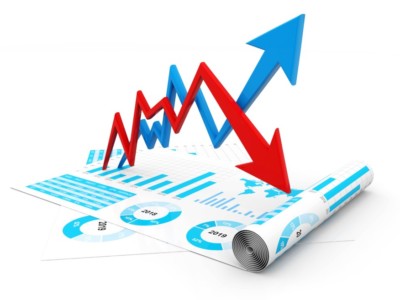With the threat of inflation lessening, concrete producers and contractors may get some relief this year.

As we recover from ringing in the New Year, it’s important to note a few clouds on the horizon that didn’t exist a year – or even six months – ago. The rate of growth in the housing and other construction markets is slowing. Auto sales are flattening after a post-Great Recession boom. Global trade wars have everyone on edge. After years of economic expansion, the “r” word is being tossed around by some Wall Street pundits.
America’s industrial and service economies, which have been pinched by tariffs, trade restrictions, and the first whiffs of a slowdown in years, aren’t alone in feeling these economic headwinds.
So is the Fed.
In early December, the business press reported the Federal Reserve was considering a new, wait-and-see approach after a likely interest-rate increase at the board’s December meeting. The board did indeed raise rates, for the fourth time in 2018, to 2.5%. While that could slow the pace of rate increases this year, officials think the overall direction will continue upward. As they push up their benchmark, they’re becoming less sure how fast they’ll need to act or how far they’ll need to go. They clearly want to assess how the economy is holding up under moves they’ve already made.
How they manage this less-predictable approach will depend on the performance of the economy and markets in the weeks ahead. This “data-dependent” strategy could prompt officials to step back from the quarterly hikes they made for most of the last two years. Under the old pattern, the Fed would raise rates at its first quarterly meeting in March. Now, Wall Street doesn’t know what to expect.
Recent stock market turbulence hasn’t (much) dented the Fed’s view the economy is on solid footing, with growth strong and unemployment low. But inflation has softened in recent months. Falling oil prices indicate further declines, reducing the Fed’s sense of urgency about raising rates to keep the economy from overheating. If growth or inflation heat up unexpectedly, the Fed could go further than planned. That scenario is very much unexpected given the economy’s current tempo.
Nothing could be better for housing, mortgage rates, corporate borrowing, and the general economy as a whole than a pause in interest rate hikes. Be on the lookout for a steady hand from the Fed this year, which could be a timely shot-in-the-arm for the concrete industry as rate hikes take a pause.
About the Author
Pierre G. Villere serves as president and senior managing partner of Allen-Villere Partners, an investment banking firm with a national practice in the construction materials industry that specializes in mergers & acquisitions. He has a career spanning almost five decades, and volunteers his time to educating the industry as a regular columnist in publications and through presentations at numerous industry events. Contact Pierre via email at pvillere@allenvillere.com. Follow him on Twitter – @allenvillere.

